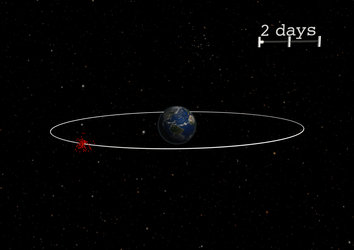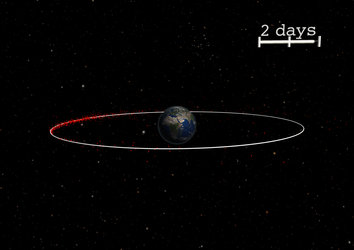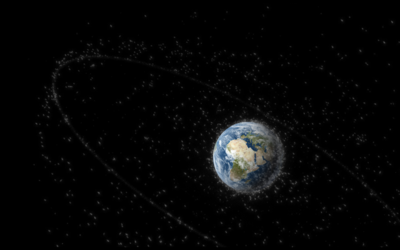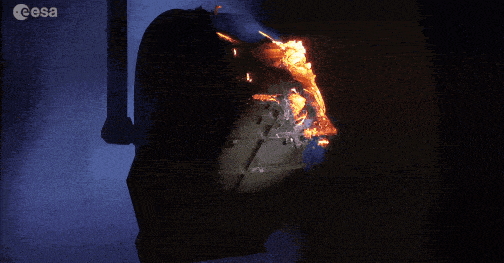

Simulated debris strike
An alternative simulation method, showing a 5 cm aluminium alloy sphere striking the LOFT LOFT (Large Observatory For X-ray Timing) satellite at a velocity of 8.5 km/s and an impact angle of 45 degrees. LOFT is a candidate ESA Science mission competing for a launch opportunity in the early 2020s. This component-level approach, undertaken by a consortium led by Center for Studies and Activities for Space at the University of Padua in Italy, treats the spacecraft as made up of larger elements, such as panels, payload, propellant tanks or solar arrays, attached together with physical links. When the energy transfer of the collision takes place, these links are broken apart and the elements are fragmented. A library of previous simulations and empirical data is applied to show how these elements fragment under the force of the impact.





